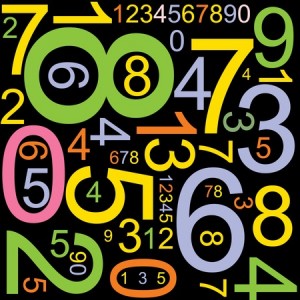
Are there patterns in how real estate agents price their properties? A new Trulia study delves in to the real estate numbers game, and finds some interesting things!
By Peter Ricci
The real estate numbers game, as any agent knows, is not always the most fun of activities. Indeed, pricing a home is a delicate balancing act between accurately valuing the home, attracting potential homebuyers and, of course, appeasing the seller.
Given the underlying uniqueness of every property, then, you would think that prices would differ across the country, but a very interesting study by the folks at Trulia has found that asking prices in the U.S. follow a distinct set of patterns – some of which that are flat-out intriguing.
The Psychology of The Number “9”
A big part of Trulia’s research revolved around the number 9, a number that, Trulia’s Jed Kolko wrote, is extremely common in everyday prices, from groceries, to electronics, to furniture. The most common explanation for 9’s preponderance is how it plays with human perception; after all, $39.99, on first glance, looks much more appealing than $40. But does that numbers game extend to real estate? Here’s what Trulia found:
- The vast majority of home prices end in zero, but the most common last non-zero digit (meaning, the last digit in a home price that is not zero) is the number 9. Fifty-three percent of listings, in fact, use 9 as that last non-zero digit, and 27 percent use the number “5,” a similarly perceptive numeral. Between the other Arabic numbers, none was used more than 4 percent of the time.
- It mattered a great deal, though, on what kind of home was being sold. Just 25 percent of luxury homes (those listed for $1 million or more) used the number-nine strategy, but for homes that reduced their price, 9 was employed 54 percent of the time for the last non-zero digit, and probably to create the impression of a better price.
The Real Estate Numbers Game – 13 and 666
Here are a couple other findings from Trulia’s report, one of which is extremely intriguing:
- Real estate agents, it seems, have a severe case of triskaidekaphobia, or, the fear of the number 13. For some strange reason, the number 13 is 13 percent less likely to appear in listings than the number 12, and 17 percent less likely than the number 14. Perhaps they play “Friday the 13th” during real estate seminars to get the point across?
- The Bible Belt is a strongly Baptist region of the U.S., and it well known for its religious conviction. Would you believe, then, that 316 and 666 – aka, the 316 of John 3:16 and the 666 of the devil – appear in the Bible Belt far more often than other places in the U.S.? For 316, the sequence appears 27 percent more often in the Bible Belt, and though 666 is rare in real estate, showing up in only 1 out of every 10,000 asking prices, it shows up 39 percent more often in the Belt.
All in all, very interesting stuff. For more numbers games from Trulia, check out this infographic they put together:

